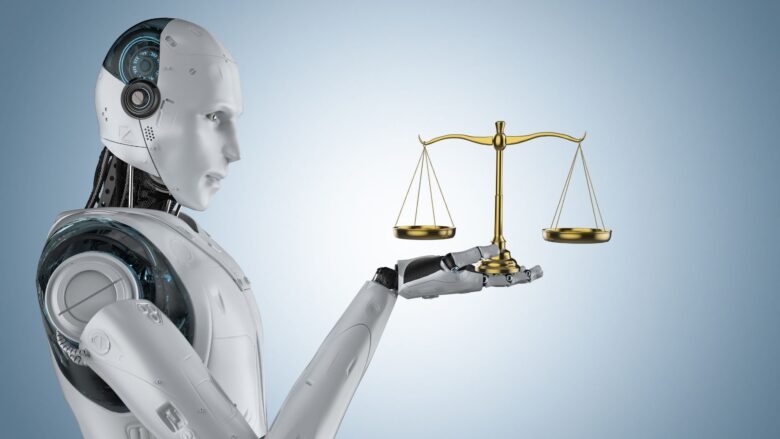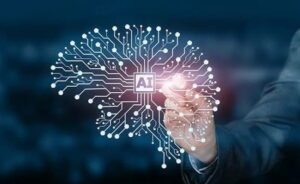AI (artificial intelligence) has transformed many areas by providing more accurate, efficient, and effective solutions. However, as AI systems become more common, the possibility that they are biased has become a major concern. In artificial intelligence, bias occurs when algorithms treat certain groups differently than others, either because of people’s prejudices or because of problems with the way the algorithms process data.
Understanding Bias in AI
There are many ways biases can occur in artificial intelligence, often through the data used to teach the algorithm. If the data contains biases from the past or society, AI systems can allow these biases to persist or even become stronger. For example, if a hiring algorithm is based on data from a company with a history of gender bias, it may indicate that male candidates are better candidates than female candidates.
The Impact of Bias on AI
Biased AI can have very bad consequences, especially as these systems are used in important areas such as healthcare, law enforcement, finance, and employment. In healthcare, biased AI can lead to erroneous results or inadequate care for patients. In law enforcement, this can lead to unfair targeting of certain groups of people. When it comes to money, AI bias can lead to poor loan or credit choices. The biggest risk is that these biases can formalize discrimination, which is unfair to everyone.
Identifying Sources of Bias
Several things can cause artificial intelligence to go wrong:
Data bias: Data bias occurs when the dataset used to train an AI model does not truly represent the entire population or has a built-in bias.
Another type of bias is called algorithmic bias: At this point, the procedures for processing data and making decisions will favor one group over the other.
Confirmation bias: Developers can influence AI systems by inadvertently selecting data sets or model parameters that support their pre-existing ideas.
Ways to Stop Bias in AI
Eliminating bias in AI requires some smart moves, including:
Diverse data sets: One way to reduce bias in your data is to ensure that your training data is diverse and represents all parts of the population.
Algorithm audits: Having an unbiased third party regularly audit algorithms for errors can help identify and fix algorithmic biases.
Awareness and training: Confirmation bias and other biases caused by developers can be avoided by teaching AI developers about biases and how to avoid them.
Implement Ethical AI Practices
Ethical AI technology is important to combat prejudice. In this case:
Transparency: The way an AI system makes choices should be clear so that users can see what their choices are based on and question them.
Responsibility: Companies must take responsibility for their AI systems and ensure that all choices they make are fair and reasonable.
Ethical standards: Using ethical standards and rules when building and using AI can help companies stay honest.
Role of Regulation in Combating AI Bias
Rules are important to keep AI biases in check. A growing number of governments and foreign groups are waking up to the dangers of AI bias and developing regulations to ensure the fairness of AI applications. These rules ensure openness, accountability, and necessary checks on bias.
The Future of AI Without Bias
The ultimate goal is for AI systems to be free of bias and use only fair, objective criteria to make choices. To achieve this, AI programs must continue to improve, training datasets must improve, and more sophisticated methods and biases must be found.
Conclusion
Eliminating bias in artificial intelligence is both a difficult technical task and an ethical responsibility. As artificial intelligence continues to transform many aspects of our lives, it is important to ensure that artificial intelligence systems are fair and neutral to build a society that treats everyone equally. The goal of unbiased AI can be achieved through careful development, continued education, and a strong regulatory framework. This will ensure that AI benefits everyone without bias.
FAQs
1. What does bias mean in artificial intelligence?
Computer programs that use artificial intelligence (AI) sometimes make mistakes when processing data or making unfair decisions, such as favoring one group of users over another. This is called bias. This can happen because of the data used to teach the AI, the way the algorithm is set up, or the biases of the developers of the AI system.
2. Why is it important to address biases in artificial intelligence?
Correcting biases in artificial intelligence is important as these machines increasingly make choices that impact people’s lives, for example in healthcare, criminal justice, and job applications. If prejudice is not addressed, it can lead to discrimination and social injustice, reducing trust in AI technology.
3. Can Artificial Intelligence Eliminate Biases?
While it is difficult to make an AI system completely free of bias, much can be done to teach it through design, development, and ongoing monitoring. The goal is to make AI systems as impartial and fair as possible.
4. Who is responsible for reducing bias in AI?
Everyone working on AI systems, from data scientists who select data sets and create algorithms, to policymakers who ensure AI is used ethically, have a role to play in reducing bias.
5. What role do rules play in preventing bias in AI?
Regulation can set fair standards for AI and ensure that companies follow ethical guidelines when developing and using AI. They can ensure openness, accountability, and frequent audits to detect bias.
6. What can users and customers do to change AI biases?
People who use and build AI systems can change biases by demanding transparency and honesty from the companies that create and use these systems. They can also support rules that encourage responsible AI and participate in the public debate about the place of AI in society.



